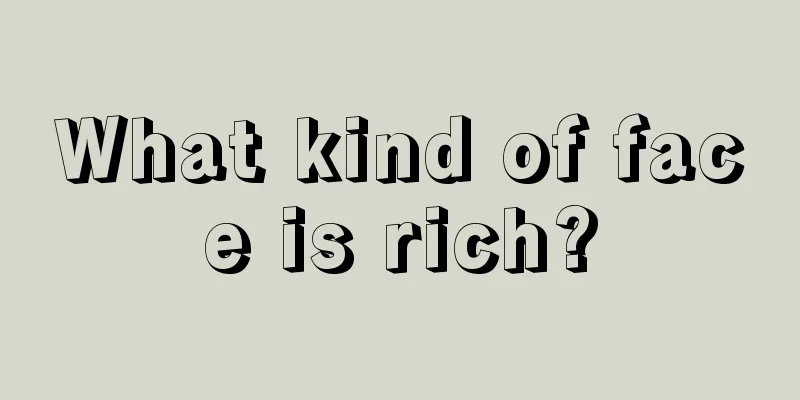Regulatory factors exacerbate changes in the stablecoin market: USDC reorganizes its reserves, and USDT gradually loses its monopoly position

|
In recent months, US regulators have repeatedly mentioned that they will develop a regulatory framework for stablecoins to improve financial stability. Against this backdrop, Circle, the issuer of USDC, took the lead and announced on August 22 that it would convert its reserves into a combination of cash and short-term US Treasury bonds. Compared with the reserve portfolio of cash, U.S. Treasury bonds, Yankee certificates of deposit, commercial paper and bonds announced in July, Circle intends to improve the liquidity and stability of USDC reserves. In contrast, although USDT, the leader in the stablecoin market, has improved the transparency of its reserves, according to the reserve portfolio announced by its issuer Tether in May, only 3.87% of it is cash deposits, and the overall fund reserves are slightly inferior to USDC. In the past few years, USDT's market monopoly has been eroded by latecomers. According to data from Feixiaohao on August 25, the current circulation of USDT is 65.793 billion, accounting for 57.83% of the market share, and the circulation of USDC is 26.987 billion, accounting for 23.72% of the market share. BUSD, a compliant stablecoin issued by Binance, also took away 10.7% of the market share with a circulation of 12.173 billion. In May last year, USDT's market share exceeded 80%. Latecomers such as USDC, which regularly publishes audit reports and emphasizes openness and transparency, have seized the pain point of USDT's long-term opaque reserves, gradually expanded the market size, and have gained support from more and more users and platforms. With the advent of the era of stablecoin regulation, changes in the stablecoin market may also intensify. With the change of positions, this market is expected to change from disorder to order. The United States has released a signal of stable currency regulation. USDC reorganizes its reservesAs the crypto asset market grows, the issuance of stablecoins is also growing. According to data from Feixiaohao on August 25, the current market value of all stablecoins in circulation exceeds $110 billion, and the top two, USDT and USDC, are both in the top ten of the crypto asset market value rankings. This market, which is worth over $100 billion, has attracted the attention of regulators in various countries, especially the U.S. regulators, which have discussed regulatory proposals for stablecoins on many occasions. About a week ago, the Federal Reserve released the minutes of its July meeting, where officials focused on the potential threat that stablecoins could pose to financial stability. Participants said that stablecoins appear to have the same vulnerabilities as major money market funds and a general lack of transparency, and that it is particularly important to monitor them closely and to develop an appropriate regulatory framework to address any financial stability risks associated with such products. Previously, Federal Reserve Chairman Powell also publicly expressed the urgency of regulating stablecoins, saying, "Currently, bank deposits and money market funds have a very strong regulatory framework, but stablecoins do not." The regulatory signals released by the Federal Reserve have aroused the vigilance of stablecoin issuers. On August 22, Circle, the issuer of USDC, announced that it would convert all USDC reserves into cash and short-term U.S. Treasury bonds. This move is obviously intended to convey to the outside world that the reserves behind USDC have sufficient stability and liquidity to ensure that they can be redeemed to the market at any time. In contrast, USDC's previous reserve portfolio was much more complex and less stable. In the USDC reserve report disclosed by Circle in July, USDC's $22 billion reserves included not only cash and U.S. Treasury bonds, but also Yankee certificates of deposit (13%), commercial paper (9%), corporate bonds (5%), municipal bonds and U.S. agency bonds (0.2%). After the reserve report was released, it aroused some concerns from the outside world. Some people believed that the commercial paper, bonds and other assets in the reserve were highly volatile and lacked liquidity, making it difficult to cope with large-scale redemption. Today, the change in the form of USDC reserves reveals Circle’s caution under the tightening of regulations. The largest leader in the stablecoin market, USDT, has also intended to improve the transparency of its reserves this year to dispel long-standing doubts in the market. In the first quarter of this year, Tether, the issuer of USDT, worked with accounting firm Moore Cayman to publish a third-party accounting audit report. The report shows that as of March 31, 2021, the total consolidated assets of USDT reserves were at least US$41.017 billion, while its total consolidated liabilities (market value of issued USDT) at the time were US$40.868 billion. The report proves that there are sufficient reserves behind USDT. Moore Cayman releases USDT reserve audit report In May, Tether disclosed the distribution of its reserve assets. Among the company's assets, 76% are cash and cash equivalents, of which 65.39% are large commercial bills and 24.2% are trust deposits. Cash deposits, which are of most concern to the outside world, only account for 3.87%; the remaining 24% is composed of credit loans, bonds and other investment targets including cryptocurrencies. Compared with USDC, which converts the reserve form into cash and US Treasury bonds, the combination of USDT's reserves is much more complicated, more volatile and less liquid. In terms of transparency and reserve form, USDC has the upper hand. Stablecoin market share changes again, USDT gradually loses its monopoly positionThe regulatory authorities have formulated a regulatory framework around stablecoins, which is a protection for market investors. For stablecoin issuers, regulatory intervention will impose higher compliance requirements, which is likely to become an important factor in exacerbating changes in the stablecoin market. In the past few years, as the stablecoin market has grown, its market share has also been quietly changing. Before 2018, USDT was almost the only stablecoin in the market, accounting for more than 90% of the market share. However, due to the lack of transparency in its reserves, the outside world has never stopped questioning USDT. Later, more transparent and compliant stablecoins such as PAX, TUSD, and USDC were launched, and the stablecoin market began to change. In October 2018, Circle and Coinbase announced the establishment of the Centre Alliance, launched USDC, and had the accounting firm Grant Thornton LLP publish monthly reserve reports. With the advantage of transparency and the adoption and endorsement of Coinbase, USDC began its catching-up journey. It is undoubtedly difficult to challenge the king of a field, but the biggest advantage of USDC has always been that it is audited and more transparent. In 2019, USDT was involved in a lawsuit for illegally misappropriating $850 million in reserves to lend to its sister company Bitfinex, causing its credibility to continue to decline. USDC seized the opportunity and began to be listed as a collateral asset by multiple DeFi lending protocols, and was listed on exchanges such as FTX and Binance, and the market demand continued to increase. Although USDT is still the most circulated stablecoin in the current market, its market share has been gradually eroded over the past few years. According to data from Feixiaohao on August 25, the current circulation of USDT is 65.793 billion, accounting for 57.83% of the market share, and the circulation of USDC is 26.987 billion, accounting for 23.72% of the market share. BUSD, a compliant stablecoin issued by Binance, also has a circulation of 12.173 billion, accounting for 10.7% of the market share. You should know that in May last year, USDT's market share was more than 80%, while USDC's market share was only about 7.5%. At this time, USDT's "dominant position" is no longer secure, and USDC's rapid growth is threatening it. Current stablecoin circulation ratio USDC has been promoting its advantages such as transparency and compliance, and it has begun to be adopted by more and more crypto assets and blockchain application platforms. The perpetual contract of the decentralized derivatives exchange dYdX is denominated in USDC instead of USDT. In May this year, when Chinese regulators began to crack down on Bitcoin trading and mining, the over-the-counter price of USDT also fell. At that time, some people proposed to exchange USDT for USDC to avoid risks. Today, the US regulatory authorities have clearly stated that they will strengthen the supervision of stablecoins, which is of course more beneficial to USDC, which follows the compliance route. As a latecomer in this market, USDC has obviously learned a lot from USDT. It has always used openness and transparency as its trump card to continuously grab market share from USDT. From the perspective of investors, whether it is the establishment of a stablecoin regulatory framework or the increasingly fierce competition among stablecoins, it will ultimately help the market transform from disorder to order, thereby protecting the interests of investors. |
>>: The Second Largest Mortgage Lender in the U.S. Will Accept Bitcoin Payments
Recommend
What does a lion nose mean for a woman?
The lion nose is very special. There are not many...
What are the upturned moon lips? Analysis of the standard upturned moon lips
Many people don’t know what crescent lips are. In...
What kind of palmistry brings wealth?
Palmistry believes that the lines on a person'...
How to read a man's eyes and face? How to read a man's fate through his eyes and face
How to look at a man's eyes? Eyes are an impo...
Santander InnoVentures invests in digital identity verification firm Socure
Rage Review : Santander InnoVentures (Santander G...
A woman with Arhat eyebrows has a facial feature explanation. What are the characteristics of Arhat eyebrows?
Eyebrows are also one of the five facial features...
AntBytom Miner B3 Review
Recently, Bitmain has released a new machine. Thi...
Blockchain newcomer Acute Angle Coin (AAC) will soon be listed on the LBank trading platform
On the afternoon of January 9, the official websi...
Judging from the face, which people are most fond of revisiting the past and brooding over it?
Have you ever met some people in your life who al...
The fate of people with broken love lines in palmistry
In daily life, people attach great importance to ...
Coinw Exchange is unable to log in and withdraw funds, is this a sign of collapse and escape?
In the current environment, almost all exchanges ...
No matter how cold it is, I won't wear a down jacket
The weather is getting colder, and keeping warm h...
Derivatives Giant CME Group Releases Bitcoin Trading Benchmark
Rage Review : The Chicago Mercantile Exchange Gro...
What does a mole on the back of the hand mean?
Everyone has some moles on their body to a greate...
A diagram of the face of a woman who will not bring good luck to her husband
Some women often cannot bring good luck to their ...









